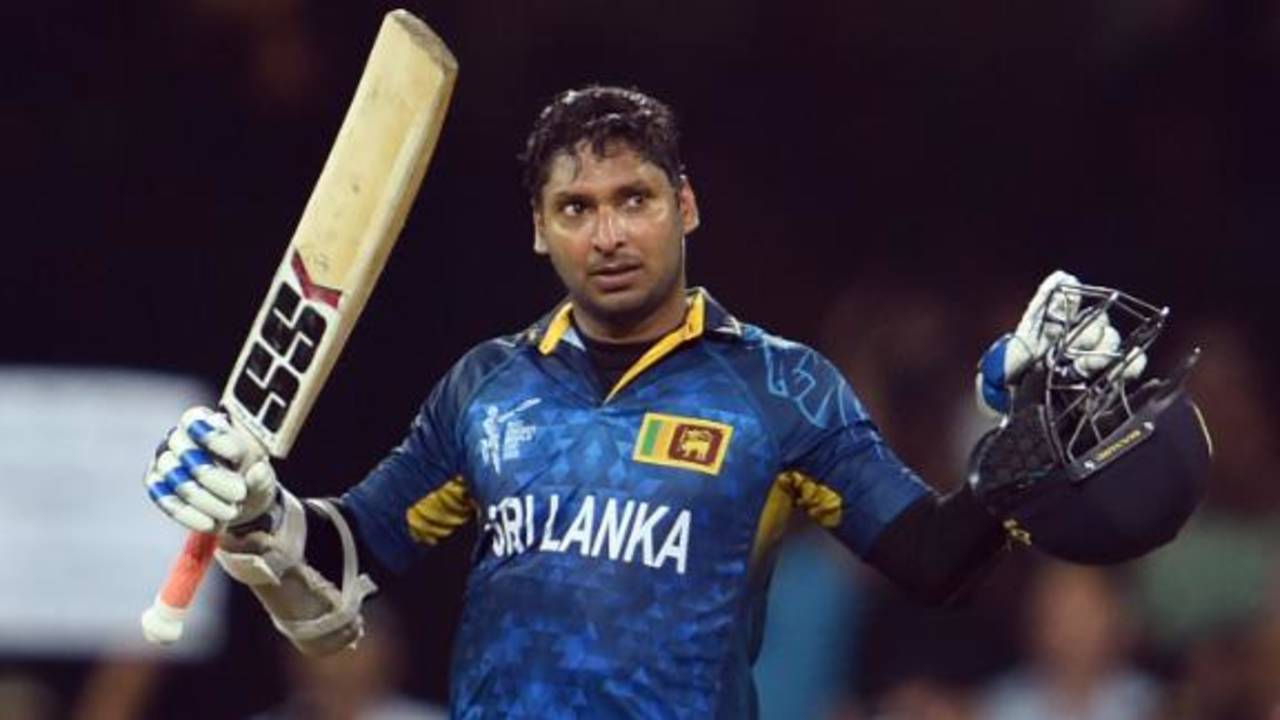Sangakkara: a mix of modern and orthodox
He embraced the current practice of playing an all-out aggressive game without sacrificing the strong technique he grew up with
Aakash Chopra
19-Aug-2015
The ball, bouncing a little more than anticipated, left the batsman after pitching, caught the outside edge of the bat and went to the keeper. In the commentator's box, we felt the delivery was too good to defend, and most players on the field would probably have thought the same. But the dismissed batsman didn't agree. Speaking after the game, he said he had made the ball look unplayable because of his lack of foot movement: since it wasn't full enough for a long forward stride, he said he should have gone deep inside the crease and played it off the back foot. By standing still he made it look better than it actually was. The batsman was Kumar Sangakkara, the bowler Ishant Sharma, and the match was an ODI in Cuttack in 2014.
All greats have a common trait of being ruthlessly honest about their own game, and Sangakarra is no different. For finding the reason for that outside edge, he chose to look inside.
In my opinion, there are four parameters to judge greatness by - statistics, longevity, impact, and the ability to adapt. Sangakkara ticks every box. Over 26,000 Test and ODI runs in a career spanning 15 years, having played plenty of match-winning and match-saving knocks, and adapting to the demands of a constantly evolving sport without a visible departure from his fundamental game are proof enough that he belongs in the pantheon of great batsmen.

Sangakkara's decisive footwork has always allowed him to be in the right position before the ball arrived•Getty Images
Modern batting manuals tell you to use your feet just enough to form a stable base and let the arms and bat do the talking. In limited-overs cricket today, hitting in the air is a necessity, not a novelty, and protecting your wicket at all costs is an outdated concept. While Sangakkara embraced these modern ideas, he remained an orthodox batsman at heart. He built his game around expansive but decisive foot movement.
In fact, the key to his success was his ability to get into the right position before the ball arrived. A full ball was always met with a long front-foot stride and the depth of the crease was fully utilised when the ball couldn't be played off the front foot. There was never anything in between, which is why he succeeded in all conditions. Most subcontinent players struggle in Australia and England because their foot movements are inhibited. To counter swing in England you must have a long front-foot stride, and to counter bounce in Australia you must have the ability to use the depth of the crease.
The other factor that made Sangakkara stand out was his immaculate transfer of weight while playing the drive, which he achieved by collapsing his back leg at the point of impact. This not only allowed him to stay low and keep the ball along the ground but also to create different angles. He stood tall to balls that were closer to him, playing the half-checked drive between the cover and mid-off fielders. For the rest of the deliveries, he collapsed his back knee, brought the bat down more horizontally and found the gap to the right of the fielder at cover. This made it almost impossible to set fields for him on the off side.

Sangakkara is as at home in the unorthodox world of modern limited-overs cricket as he is in the long form•AFP
In theory, the aggressive shot is just an extension of the defensive one, but in practice it's a little more complicated. However, Sangakkara could go airborne without any visible change to his approach. The only difference was that he stayed away from the ball a bit to get the elevation. He still played most shots with a straight bat, and that's why there were no visible chinks in his armour. The safest way to bat is to present the full face of the bat at all times, and Sangakkara mastered that craft. He is one of the few modern batsmen who hit through the midwicket region with a straight bat.
Most dominant players show signs of slowing down in the latter half of their careers, leading to murmurs about retirement. Along with Rahul Dravid, Sangakkara is one of the few great contemporary batsmen who averaged more in the last year of their international cricket than overall. His is the case where people genuinely ask "Why?" and not "Why not?" - and that's a tribute to the great man.
Aakash Chopra's book The Insider: Decoding the craft of cricket, is available now. @cricketaakash
